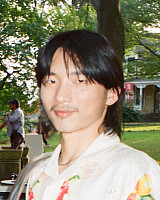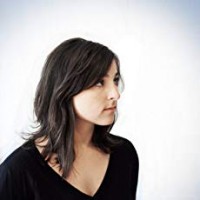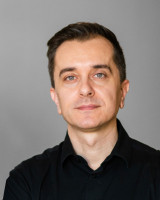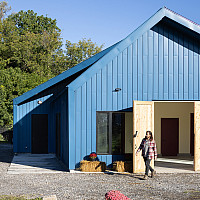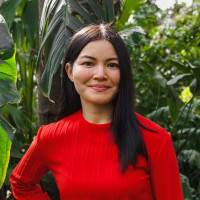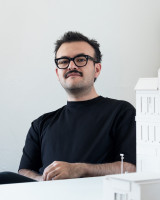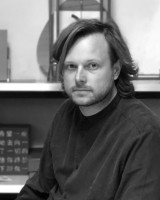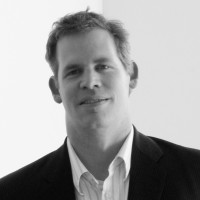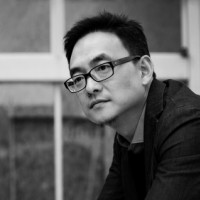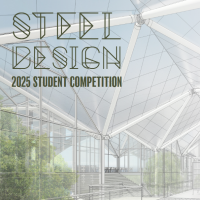Financial Considerations
Can you please talk a little bit about how can students apply for TA opportunities and who we can contact for Need-Based scholarships?
TA positions are applied to and awarded each April for the next academic year (Fall - Spring). There are some positions which become available at the end of the fall semester. These are applied to and awarded in November. Generally, the School of Architecture Graduate office awards merit-based scholarships as our admissions are need blind. However, you are welcome to email us if you have circumstances which may warrant our attention at archgrad@syr.edu.
Have tuition rates for 2021-2022 been posted yet? Can you explain the fee structure and scholarship allocation?
Tuition is charged per credit hour. The rate for the 2020-2021 academic year was $1,683. For example, if you were to take 10 credits in the fall semester, you would only pay for $16,820 (10 x $1,683). Any additional fees are charged to your bursar account each semester. Your first-year scholarship is deducted from those costs (split evenly during the fall and spring semesters).
Are all merit-based scholarships for Fall awarded at admissions or are there others that we can still apply for as first year grads?
Our “graduate merit awards” and TA opportunities are awarded at time of admissions. Nevertheless, there are other award programs (our endowed scholarships most notably) that incoming students are eligible to apply to during their first year as well.
Regarding the teaching assistantships when and how do we go about applying? In addition to applying for the assistantship, what is the process for obtaining a certificate for teaching?
You can apply for a limited number of Teaching Assistantships in the Spring, your second semester. The application is sent by the Graduate Programs office and awarded based upon pre-requisites, GPA and availability. The Certificate in University Teaching Program is administered by the University, but a participant’s mentoring and evaluation of qualifications is conducted in the school of architecture. More information on the program is available at graduateschool.syr.edu/current-students/future-professoriate-program/certificate-in-university-teaching.
Curriculum and Academics
Can you describe the nature of the studio environment, from the student’s perspective?
Student 1: My studio currently has nine students and we get a lot of individual time with our studio professors. Both of my studio professors thus far have been incredibly positive and easy to work with.
Student 2: At the time I enrolled (advanced standing), there were 30 of us in the studio with three instructors. I feel the environment has positive and we have a great camaraderie. The professors always make sure we all have face time. The studio workspaces are a great place to work together although some students do prefer to work at home if they choose to do so.
What is considered an open elective?
“Open elective” is our name for any class from any part of the university outside of the School of Architecture. Students propose a course to the graduate office and describe why they feel it is specifically relevant to their degree pursuit. These are complemented with “Professional Electives,” which are elective courses offered by the School of Architecture.
For the final year thesis, are students usually working off a central ‘theme’ shared by everyone, or are projects defined individually?
We have created a model for the MArch program where students are expected to define and pursue their own topic of investigation while at the same time work in advising groups that share perspectives on knowledge, research methods or approaches. It’s the best of both, we feel.
I understand that the thesis has a broad degree of intellectual freedom and guidance. How is that degree of intellectual freedom built into the rest of the program?
The curriculum and atmosphere here is wide-ranged with many different interests that can be seen in studio topics and professional elective classes. Many students find that the classes and studios they take have helped them focus more on their interests. For example, a friend of mine is focusing her thesis around coral reef sustainability, an interest that grew from our NY Studio last summer and a studio this Fall that focuses on climate resiliency. Personally, I am taking a seminar class that talks about postcolonial experiences in architecture and utopic ideals, feeding my interest in postcolonial paradigms in architecture. All of us focus on our interests and we find that the curriculum and faculty really help with both refining, researching, and evaluating these interests towards our thesis work.
Can you please tell me how are projects are graded? I know some schools have pass/fail system but I am wondering how this is going on at Syracuse University.
All classes at Syracuse University normally operate under the US’s letter grade system, A through C- and F. The percentage correlations to these letters vary widely across the globe, but we generally follow a common grading scheme in the US (A=90; B=80; C=70).
What has been the most challenging aspect of this program from a student’s perspective?
Student 1: For me it has been learning how to learn architecture. I studied economics as an undergraduate and learning in a studio environment and conducting research in architecture has been a tricky but rewarding transition. Aside from that, the time commitment has been challenging due to the rigor of the program.
Student 2: I came from an architecture program; I studied in Indonesia. For me the main learning curve has involved the software programs. In Indonesia we mostly used Sketchup and AutoCad whereas in Syracuse we mostly use Rhino and Revit. In addition, managing time is always a challenge, particularly if you are a Teaching Assistant. But all of this has been a welcome challenge to most of us.
For international students, how many courses should they enroll in for the first semester?
All students may enroll in up to sixteen credits per term unless they are serving as a teaching assistant, in which case it is thirteen. We also recommend enrolling in no more than thirteen if you are working at the school in any capacity, including as a research intern. Incoming students requiring additional English language support find that enrolling in thirteen credits provides a more accommodating schedule.
As the Fall 2019 MS.DEF studio was centered around the issue of waste, has a thematic design issue been identified for Fall 2021 semester as of now?
The topic will be finalized in the summer. In the past years, we have thematic topics in Wetland Urbanism (2018), New Urbanism (2017), New Metabolism (2016), and the Low Carbon City (2015). Regardless of the theme, the objective is to research the city as an idea from global, national, regional, urban, architectural, and product scales and through social, political, economic, cultural, environmental, and technological perspectives.
How many students are there in a graduate studio and in total in the graduate program? What is the typical class size per-year, and how many of those students usually come in with advanced standing and join the second-year studios?
We have about 100 students in the graduate program, MArch and MS combined, with about 30 in each incoming MArch class. About half of the incoming students each year come into the advanced-standing program with pre-architecture or architecture degrees, and half with degrees outside of architecture.
Is the one year M.S. program- Design Energy Future, STEM designated ?
Yes. All of our programs–MArch, MS.DEF and MS.RED are STEM designated.
Summer Study in New York City/Three Cities Asia
How does the summer course exactly work?
Students have the opportunity to choose to study in NYC or our Three Cities Asia program. Both programs are approximately 2 months long and have very different focuses. They are presented to students in late Fall and students are asked to choose their program by December/January. The Three Cities Asia program is coordinated by the Study Abroad office and students enroll in two courses taught in tandem to support the traveling study. The NYC program is taught from our year-round Fisher Center, and allows students to organized more independent trajectories beyond the design studio through elective coursework, including a voluntary internship course.
Student: I did the Three Cities Asia program in my first summer semester, but I know students who did it in their second summer. For me it was a great experience, it includes a six-credit studio and three credit research course. We traveled across Japan, China and Hong Kong visiting offices, guest lectures, museums, sites, exhibitions, and more. Your academic work runs along and in connection with all these things. It’s a very good program.
Could you talk in a little more detail about the credit hours scheduled during the summer? How do they interact with other activities like internships, and do they require being in Syracuse?
The summer credits in NYC or our Three Cities Asia programs are taken in those respective locations. In the Three Cities program, it’s not possible to complete an internship during the time you are in the program, as it is an immersive travel program (9 weeks).
In NYC, we offer a three-credit internship course. Masters students are able to take this class during the summer whether or not they are enrolled in the NYC summer studio. The internships range from paid full-time and part-time experiences in host offices to one-day-per-week unpaid mentorships reserved for students who are taking the summer studio, which meets multiple days per week.
Can someone speak on their NYC experience? What was your favorite part of the program?
We hope a student who has completed the NYC program joins later to share their perspective. But as the director of the NYC program and longtime resident of the city, I can say that the city is an incredible place to live. Our NYC program is immersive and draws upon the city’s culture of architectural and urban innovation which mediates zoning policy, land use, development forces, architectural typologies, and local communities. While the work we do is specific to NYC, many issues such as climate-adaptive design and resiliency relate to problems that cities around the world also face.
Also, many students study in NYC because they are interested in living and working here after they graduate. We host a public event series, where students, alum, and professionals throughout the city come together to hear from professional leaders. We also offer an internship course, which is very popular among students. For this class, we pair students with host offices, and provide a seminar on comparative professional practices.
For students doing the 3-year MArch program, the summer travel studio is between the first and second year, not the second and third, correct?
It is recommended, but not required for students to complete their summer studio during their first summer. However, it is not required to do so. Thus, if you would feel more comfortable completing your second summer, we would advise you to discuss the option with our graduate student advisor, Jennifer Klemenz.
For the summer program, either NYC or Three Cities Asia, are we paying all the expenses during the trip?
We offer some merit-based scholarship for these programs. Depending on the program, some of these expenses are packaged together and provided to you and other students at a discounted cost via an up-front fee. Other costs are on your own. In the Three Cities Asia program, all travel and lodging, including many meals, are covered by the program fee; students are expected to independently cover travel only to/from the program. In the NYC program, the much smaller fee covers academic program costs, and students are responsible for travel, lodging, and meals. More information on the NYC program can be found at soa.syr.edu/programs/global-campus-study/new-york-city or the Three Cities Asia program can be found at soa.syr.edu/programs/global-campus-study/three-cities-asia.
Matriculating and Registering for Courses
How do I get Intent of Registration form?
Once you are fully admitted to the University (i.e. all of your conditions are met) you will receive an email from grad@syr.edu with your letter of intent to register and deposit form. If you are an international student, you should reference the Admitted Student Checklist, to make sure all of your conditions are met.
When are we able to start registering classes?
Registration begins in early August, however, advising takes place during orientation week. All first-year classes have reserved spaces for our graduate students, so you do not have to worry about taking your required courses.
When does the Fall semester start ?
Orientation begins on August 23, and classes begin on August 30.
Resources and Technology
What kind of facilities for model making is available on the campus? Is there a wood or plastic workshops for building models. Also is there a material shop available there?
There is a great shop in the architecture building. Some plastics can be used on the equipment they have there. There is also CNC milling, 3-D printing, and laser cutting facilities.
Is there a place on and off campus to buy architecture model making materials?
Yes, there is a branch of the campus store in the school of architecture building itself that specializes in art and architectural supplies. If something can’t be found, the main campus store is less than a five-minute walk from the School of Architecture.
For the graduate studio, are we able to use our own laptops or are there computers within the studio as well?
You can use your own laptop, however there are computer labs available if you need additional assistance
What kind of computer do we need? What are the requirements for hardware configuration?
Student 1: Personally, I think the computer that can support your rendering is better. But, you also can use the computers in our lab.
Student 2: As far as a computer goes, you’re going to want to be able to run Windows. I have a 2014 Mac and have been able to partition it to run Windows also which has worked fairly well, so if you already have a Mac you should be fine, you’ll just have to do some reconfiguring of your hard drive (the tech department can help you if you don’t know how to do this). Here is a link to our computing page with details about what is available in the lab as well as suggestions for your own computer. The more powerful the better, but you can get by with less expensive options too and supplement what you can’t do on your own computer using the school’s lab computers.
What software is generally used by students in the MArch program for presentation and design?
Student 1: You have some options, but generally we use Rhino with V-ray for 3D modeling and rendering. We also use Illustrator, Photoshop and InDesign very frequently to make digital drawings, portfolios and presentations. There are a lot of other software you can use depending on what you need to do, but these are the main ones.
Student 2: Rhino is primary software for modeling, students usually use photoshop and illustrator for drawings. V ray or Lumion for rendering. You might have to learn new programs for some class, For 606 studio we leaned Unity for my Media class I leaned Grasshopper and ArcGIS. Students use After Effects and Premier Pro for some work. All students get LinkedIn Learning so you can use that to learn new tools. You will get all resources that you need to learn these program. I would say there is extremely low possibility that you will use AutoCAD, Revit to SketchUp.
Professional Work and Internships
Are there any students who manage to work part-time in addition to the MArch coursework? Additionally, how is Syracuse, as a city, in terms of architectural firms and employment?
Many students choose to work, in addition to studying. However, we have found that for students who take the 16 credit course load, it is too much and so we recommend to drop at least 3 credits from your curriculum if you choose to work. You should note, that as an international student you are not able to work off-campus until you have completed your first year of study (per visa restrictions), so many of our students work as research interns, in our fabrication lab or library.
We all are aware of the economic breakdown. How well assured are the employment opportunities in the city?
As everything is still moving, I can’t say for sure what is in store in the near future. But the School of Architecture itself has a very rigorous Career Services that has been helping students to connect with potential employers and also prepare for the job searching process from practice interview, portfolio reviews, resume workshops, etc. There are architecture jobs in the city, but many students also leverage the School’s connections from other cities such as New York City, Washington DC, Boston, etc. I’ve seen many of my friends, from both undergraduate and graduate programs, getting jobs with the help of platforms the school provide.
For current students, where do people usually intern during the summer? Is it primarily in NYC, or do a lot of people end up going to other cities?
There is a vast array of firms across the world where students choose to intern in the summer. We have a very robust career services office, which is dedicated to only architecture students. They will assist students in all aspects of their career search from resume writing, interview prep and job fairs. They will work with you to identify the type of firm you are looking to partner with and whether you want a small or large firm. So, while some choose NYC, others choose Auburn, AL or Los Angeles, or London. It’s all about preference and opportunity.
Student: I would not say its primarily in NYC, I have friends who went to San Francisco, LA, Boston and many other cities for internship. Application process in online and you can find wide range of opportunities across US and world. I have friends who did internships in China and Africa. So, we have options. It’s possible that due to proximity of NYC more opportunities are available in NYC
Living Arrangements
Where do graduate students prefer to live, on or off-campus? Are there any advantages to staying on campus?
Most graduate students prefer to live off campus. Most of us prefer the flexibility of living off campus. And as ‘off-campus’ as it goes, many of us still live very near the campus neighborhood which allows us ease of access to the many school facilities.
We have an off-campus website which will assist you in finding roommates and other housing options. You can find that link on the Welcome 2021page, located on the right side in the links section.
Do most students live with walking distance of campus, or further out with a ‘commute’?
The vast majority live within walking distance, there’s a pretty good bus network around campus too that can get most people home easily.
There are some apartment complexes that are well connected with the bus network. And I also see some students who live further away and drive to campus but most students live nearby.
Can you explain how much can we expect for living off campus regarding the rent and food?
Depending on the place you choose to stay, rent can be anywhere from $300 - $1,200 USD, and I spend about $30 per week on groceries. It all depends on your standards of living.
Can you please tell me how much I can expect for a studio apartment?
A studio apartment, in an luxury apartment building typically costs around $1,200 a month from some of my friends who live close to campus. Some can get cheaper than that when you’re not in the campus area.
When should we move to Syracuse?
We suggest you move to Syracuse in mid-August, so you are able to acclimate prior to the start or orientation, which begins August 19 (for international students), August 23 for domestic students.
